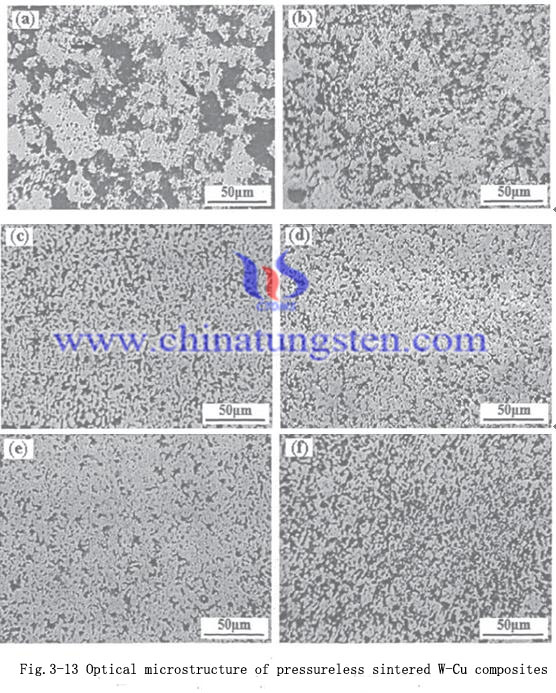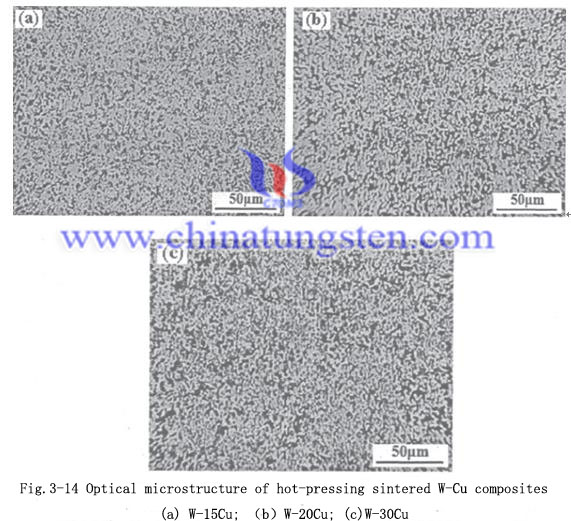Tungsten Copper Phase Diagram
Tungsten copper composites with high electric and thermal conductivity, the arc erosion resistance and high temperature stability and other outstanding features, in an electronic device with high temperature resistant device has good application prospect. The tungsten copper composites of the latest research results were analyzed, introduced current tungsten copper composites, preparation and densification technology, tungsten copper composites for further application and development prospects.
Tungsten Copper Phase Diagram
The following figure (a), (b), (c) and (d) shows the W-20Cu composite powder 350Mpa after cold forming respectively 1050 "C, 1 100" C, 1150 "C and 1200" C samples sintered microstructure 90rain photos, (e) and (f) are the W-15Cu and W-30Cu in the same molding pressure 1200 "C sintered microstructure 90min photos. All images are eroded after photomicrograph, due to erosion of the hydrochloric acid solution of ferric chloride etchant object is Cu, so the figure is colored tissue w phase, after dark organizations erosion Cu phase and porosity.As can be seen from the figure, different sintering temperatures of W. Metallurgical microstructure 20Ch composite sintered body similar to that of the W-phase and phase distribution phase Cu, Cu-phase distributed around the W phase, which fully reflects the W-Cu system liquid-phase sintering densification characteristics, namely, by the liquid phase sintering Liquid copper capillary force formed to promote the W particle rearrangement and filling the pores to achieve densification. From (a) the figure can be seen in the sample sintered at 1050 ℃ Ql phase uneven, and there are a large number of Cu pooling phenomenon (of the arrow), this is because the temperature is low, Cu liquid phase is relatively less, diffusion is insufficient, so the pores are not easily filled, easy contact between the W particles grow; while at lower temperatures wettability W, Cu difference between, is not conducive to densification. In l100 "C lower, W, Cu has a relatively uniform phase distribution, Cu pooling phenomenon greatly reduced. Comparative (c) and Fig. (D) in FIG, dense microstructure 1150 ℃ and 1200 ℃ sintering of more than 1100 ℃ Good, W, C! ll phase distribution is more uniform, but also can be seen after the sample sintered at 1200 ℃ grain size of W compared to 1150 ℃ slightly grown, while increasing the connection between W.W. from ( c) map and (f) can be seen in Figure W-15Cu and W-30Cu in 1200 "C sintering also received a uniform organizational structure, densification better.


Tungsten copper composite material has been widely used in many areas of industrial production, the preparation of new technology, new technology matures, but there are still some problems to be solved. Among them, the most important thing is to present a lot of high performance tungsten copper composite material even though it can successfully developed in the laboratory, but from the true sense of the industrial production also has a certain distance.
Any feedback or inquiry of Tungsten Copper Alloy Products please feel free to contact us:
Email: sales@chinatungsten.com
Tel.: +86 592 512 9696 ; +86 592 512 9595
